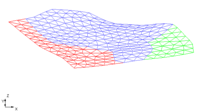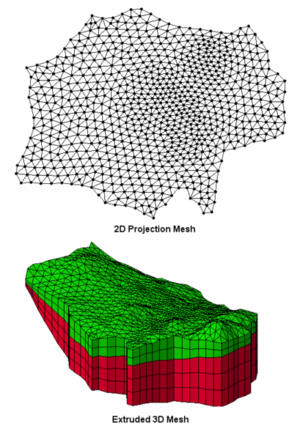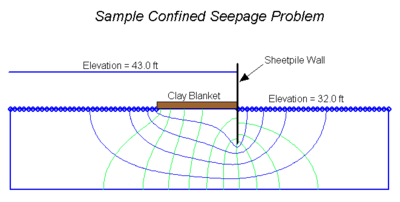GMS:2D Mesh Module: Difference between revisions
From XMS Wiki
Jump to navigationJump to search
No edit summary |
No edit summary |
||
| Line 1: | Line 1: | ||
{{2D Mesh links}} | {{2D Mesh links}} | ||
The 2D Mesh module is used to construct two-dimensional finite element meshes. The mesh consists of nodes that are grouped together to form elements. Numerous [[GMS:2D Mesh Tool Palette|tools]] are provided for [[GMS:Creating a 2D Mesh|automated mesh generation]] and [[GMS:Editing 2D Meshes|mesh editing]]. 2D meshes are used for [[GMS:SEEP2D|SEEP2D]] modeling and to aid in the construction of 3D meshes. The figures below show an example of a SEEP2D model and a [[GMS:3D Mesh Module|3D mesh]] created using the 2D Mesh Module. | The 2D Mesh module is used to construct two-dimensional finite element meshes. The mesh consists of nodes that are grouped together to form elements. Numerous [[GMS:2D Mesh Tool Palette|tools]] are provided for [[GMS:Creating a 2D Mesh|automated mesh generation]] and [[GMS:Editing 2D Meshes|mesh editing]]. 2D meshes are used for [[GMS:SEEP2D|SEEP2D]] modeling and to aid in the construction of 3D meshes. | ||
The figures below show an example of a SEEP2D model and a [[GMS:3D Mesh Module|3D mesh]] created using the 2D Mesh Module. | |||
{| | {| | ||
| Line 8: | Line 10: | ||
|} | |} | ||
The module contains its own [[GMS:2D Mesh Settings|settings]] and [[GMS:2D Mesh Display Options|display options]] including options to for contour and vector display. | The module contains its own [[GMS:2D Mesh Settings|settings]] and [[GMS:2D Mesh Display Options|display options]] including options to for contour and vector display. Currently, GMS only allows one 2D mesh to be included in a project. | ||
==Mesh Element Types== | ==Mesh Element Types== | ||


